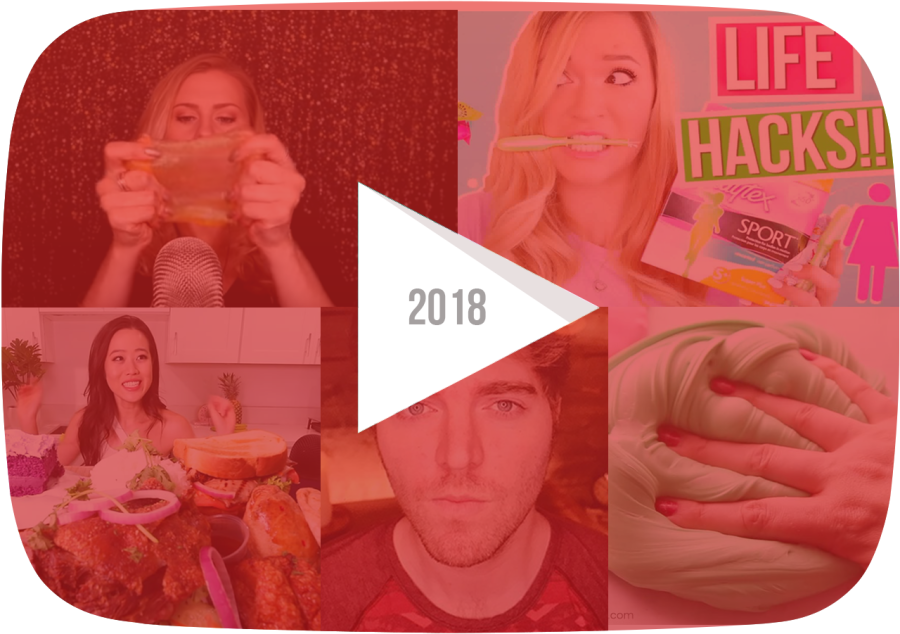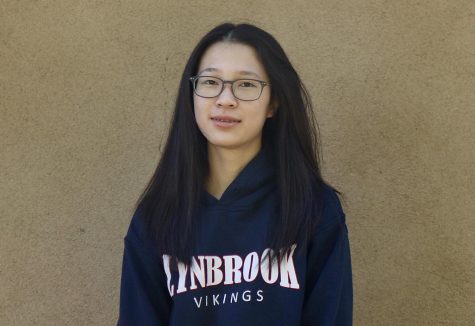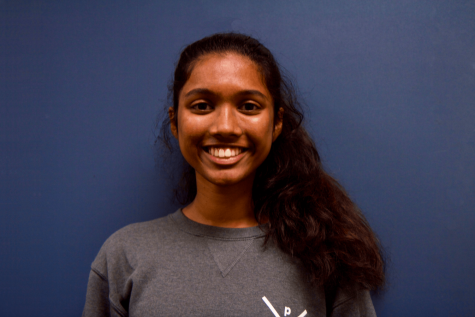The 2018 YouTube Scene: The Past Year’s Popular Video Trends
ASMR, slime, conspiracy theories and mukbangs were just a few of the many YouTube trends in 2018.
February 2, 2019
YouTube fosters creativity with its diverse content creators. With diversity comes the creation of unique content, some that can blow up and become trends. As 2019 begins, let’s take a look back at some of the biggest 2018 YouTube trends.
ASMR:
Autonomous sensory meridian response (ASMR) videos took the world by storm, giving viewers a combination of pleasing feelings and tingles on the skin. The goal of ASMR is to soothe and comfort listeners through sounds and images that cause the body to relax. Common effects of ASMR are light tingles on the scalp, behind the neck or down the spine. ASMR can be soft whispering, rustling of leaves — any satisfying sound. YouTuber LifeWithMak, who currently has 1.2 million subscribers, rose to fame by combining the trend with role play for an immersive experience. In one video, LifeWithMak acted as a flight attendant assisting a passenger while simultaneously doing ASMR. The search for new sounds to record for ASMR inspired YouTubers to create unique content, so one could say ASMR had a huge part in promoting content creativity.
Watch staffers of the Epic try ASMR here:
Shane Dawson:
Known for his comedic and down-to-earth personality, Shane Dawson is a YouTuber with 19 million subscribers. Last year, he started a documentary-esque video series featuring controversial YouTubers, including Jeffree Star, a popular makeup guru who stirred up drama in public clashes with other beauty stars, and Jake Paul, a vlogger who has received backlash for his over-the-top content. Trending at number one on YouTube when it debuted, the series garnered much attention as it gave insight into the lives and personal struggles of YouTubers. Reactions to the series were divided; some called the videos inspiring for providing transparency and truth, while others thought of the videos as lackluster for their cheesy attempts at gaining viewer sympathy.
Mukbangs:
Mukbangs, essentially eating shows with conversation, started in Korea in 2009. In mukbangs, YouTubers feast on overflowing plates of food while conversing with viewers in the format of Q&A’s and storytime videos. Mukbangs allow YouTubers to have intimate conversations with viewers. They were introduced to the U.S. through a video posted by TheFineBros, a well-known reaction channel, that featured Americans’ reactions to mukbangs in Korea. Appealing to viewers with the warmth of sharing a meal with company, mukbangs quickly became one of the most popular trends of the year. In addition, viewers are exposed to different cultures and eating habits. For example, YouTuber Stephanie Soo, who specializes in vlogs and mukbangs, features Korean cuisine in some of her videos. Although many enjoy watching mukbangs, some have pointed out that the YouTubers’ eating habits promote eating disorders, such as binge eating and an unrealistic body image as mukbangers seem to maintain a healthy weight despite gorging on huge plates of food.
Slime:
Beginning as a niche Internet fad on Instagram, slime quickly spread its way onto YouTube and other social media platforms. Although slime was already big in 2017, it gained greater recognition and exposure in 2018. Slime is easy to make, only requiring water, glue, laundry detergent and borax. Some YouTubers even add their own twists, adding shaving foam or plastic beads to change the texture of slime and produce different sounds. The satisfying sounds and textures of playing with slime make them a common feature in ASMR videos.
Soon after slime became popular, DIYs, challenges and content centered around slime have popped up on YouTube and various other social media platforms. Slime business has also boomed because of the sudden fame, leading to shortages of glue in some craft stores.
Lifehack videos:
Life is not always easy; sometimes a little help can go a long way. Lifehack videos surged in popularity in 2018, as they provided creative methods for resolving simple daily problems, such as how to freshen up the scent of an overused fridge and how to eat chips without having to reach into the depths of the bag. While the utility of these videos is debatable, they provide wholesome entertainment. Some channels, like 5-Minute Crafts, are entirely dedicated to lifehack videos.
These six trends have shaped YouTube content in terms of interaction with viewers and genres, opening up new avenues for creativity and expansion of content. ASMR led to content that was more intimate with viewers, and life hack videos led to the birth of short but still informative videos. None of these trends seem to fit into a certain category; all are unique. 2018 YouTube trends have been loved by many, but because of the continuous hunt for new content, they may not last. Goodbye 2018, and hello to 2019’s trends.





























































